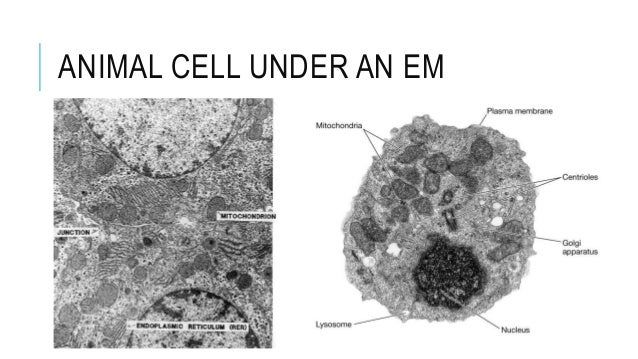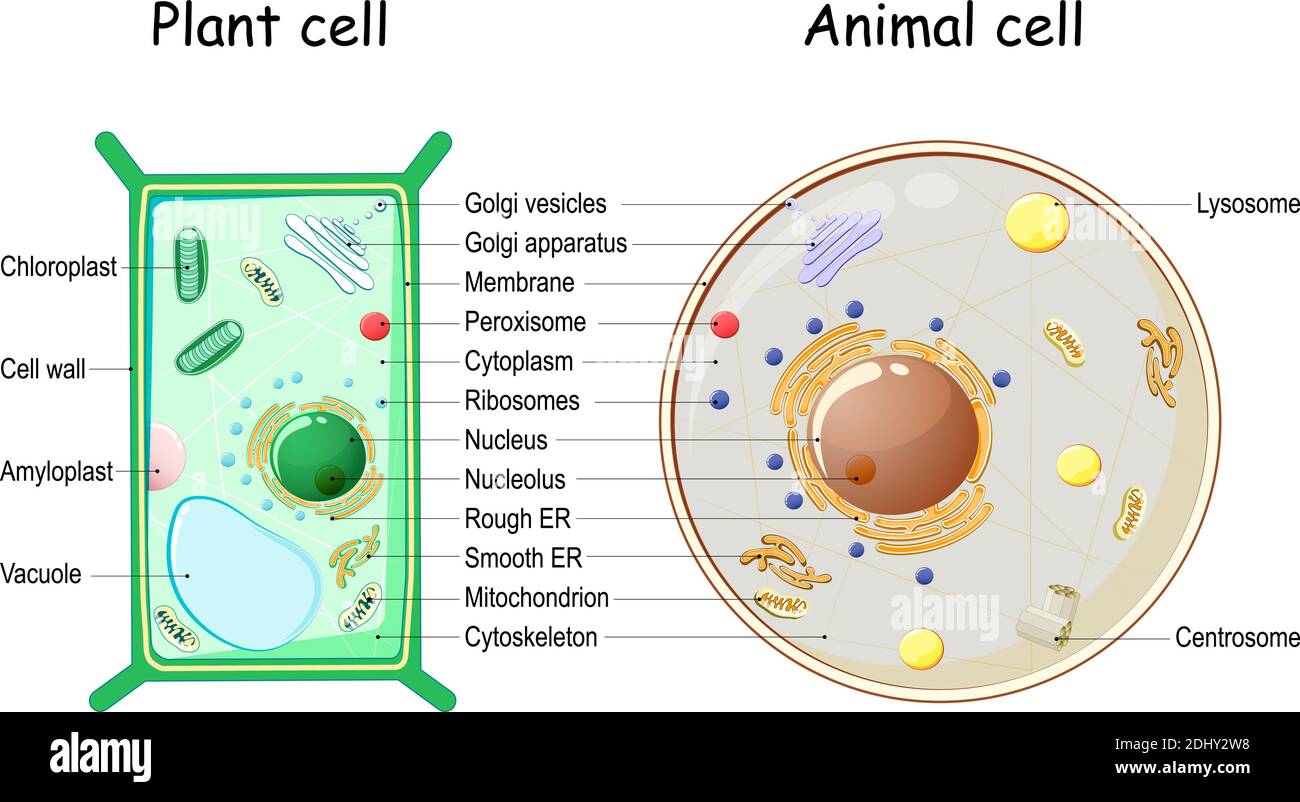Animal Cell Structure Under Microscope - Animal Cell Structure And Organelles With Their Functions Jotscroll - Animal cell membrane is thin, quasifluid structure present both extracellularly and intracellularly.
Animal Cell Structure Under Microscope - Animal Cell Structure And Organelles With Their Functions Jotscroll - Animal cell membrane is thin, quasifluid structure present both extracellularly and intracellularly.. Animal cells have unique features that distinguish them from plant and fungi cells. (a) state the resolution and magnification that can be achieved by a light microscope, a transmission electron microscope and a scanning electron (j) compare and contrast, with the aid of diagrams and electron micrographs, the structure and ultrastructure of plant cells and animal cells. Cells consist of cytoplasm enclosed within a membrane, which contains many biomolecules such as proteins and nucleic acids.2 most plant and animal cells are only visible under a light microscope, with dimensions between 1 and 100 micrometres.3 electron microscopy gives a much higher. The discovery of cells was first made by however, hooke observed dead cells under the microscope as cork is made up of dead cells. 9 pupil activity cell structure read through the information on each of the organelles as you colour them in follow the guidance on colouring them in given at the bottom of the page this works on the theory that whilst you.
Cell is a tiny structure and functional unit of a living organism containing various parts known as organelles. Glass was developed by the romans in the first century. The animal cell is more fluid or elastic or malleable in structure; Learn the most common 11 parts of the plant cell such as nucleus, cytoplasm, cell membrane. Examining plant cells under the microscope.

Thickness of biomembrane is about 75a°.
Describe and compare the structure of a plant cell with an animal cell, as seen under a light microscope, limited to cell wall, nucleus, cytoplasm, chloroplasts, vacuoles and location of the cell membrane. Thickness of biomembrane is about 75a°. The nucleus, usually spherical or ovoid structure that contains the genetic material. Within the cytoplasm, the following organelles are visible in almost all cells except prokaryotes when looking at higher magnification (ie endoplasmic reticulum studded with ribosomes looks rough under the microscope; There are millions of tiny cells to make up human being, but it will be painful to take out several cells in your animal cell under microscope: There are various tasks done by a cell to complete them as the cell is the basic purposeful. Glass was developed by the romans in the first century. University holds stem cell research boon wee looked through a microscope to study the structure of a cell. He decided to call the microscopic shapes that he saw in a slice of. The nucleus is separated from the cytoplasm by a membrane known as the nuclear membrane. 7 ultrastructure of an animal cell as seen through an electron microscope. This drug might be impairing the activity of chloroplasts in animal cells. Pupil activity • cell structure • read through the information on each of the organelles as you colour them in • follow the guidance on colouring them in given at the bottom of the page • this works on the theory that whilst.
The nucleus, usually spherical or ovoid structure that contains the genetic material. Under a microscope, plant cells from the same source will have a. The cell membrane, the structure that surrounds the cell and regulates the flow of substances between the cell and its surroundings; We say cells are microscopic because they can only be seen under a microscope. Pupil activity • cell structure • read through the information on each of the organelles as you colour them in • follow the guidance on colouring them in given at the bottom of the page • this works on the theory that whilst.

This drug might be impairing the activity of chloroplasts in animal cells.
The cell membrane, the structure that surrounds the cell and regulates the flow of substances between the cell and its surroundings; Chromatins are of two types, they are. Glass was developed by the romans in the first century. University holds stem cell research boon wee looked through a microscope to study the structure of a cell. It separates cell organelles from cytosol. Plant, animal and bacterial cells have smaller components each how have light microscopes developed? There are various tasks done by a cell to complete them as the cell is the basic purposeful. Animal cell membrane is thin, quasifluid structure present both extracellularly and intracellularly. You can stain the nucleus and see it clearly by using a microscope. Now that we have looked at the basic structures and functions of the organelles in a cell, you would have noticed that there are key differences between plant and animal cells. Thickness of biomembrane is about 75a°. We say cells are microscopic because they can only be seen under a microscope. Cells are the basic unit of life and these microscopic structures work together and perform all the necessary functions to keep an animal alive.
All the living organisms are made up of cells and it is the smallest unit of life. 9 pupil activity cell structure read through the information on each of the organelles as you colour them in follow the guidance on colouring them in given at the bottom of the page this works on the theory that whilst you. While the proteins made in the cytosol of eukaryotic cells are, indeed, produced from the 80s. You can stain the nucleus and see it clearly by using a microscope. Under the microscope, an animal cell shows many different parts called organelles, that work together to keep the cell functional.

Thickness of biomembrane is about 75a°.
However, it is best if the staining is. (a) state the resolution and magnification that can be achieved by a light microscope, a transmission electron microscope and a scanning electron (j) compare and contrast, with the aid of diagrams and electron micrographs, the structure and ultrastructure of plant cells and animal cells. Within the cytoplasm, the following organelles are visible in almost all cells except prokaryotes when looking at higher magnification (ie endoplasmic reticulum studded with ribosomes looks rough under the microscope; The cell membrane, the structure that surrounds the cell and regulates the flow of substances between the cell and its surroundings; Under electron microscope, cell membrane appears trilaminar (made up of three layers). Ultrastructure of an animal cell as seen through an electron microscope. Describe and compare the structure of a plant cell with an animal cell, as seen under a light microscope, limited to cell wall, nucleus, cytoplasm, chloroplasts, vacuoles and location of the cell membrane. Most cells, both animal and plant, range in size between 1 and 100 micrometers and are thus visible only with the aid of a microscope. Examining plant cells under the microscope. Paheli wants to know if the structure of the nucleus is the same in cells of plants, animals and bacteria. Pupil activity • cell structure • read through the information on each of the organelles as you colour them in • follow the guidance on colouring them in given at the bottom of the page • this works on the theory that whilst. Generalized cell is used for structure of animal cell and plant cell to present. See how a generalized structure of an animal cell and plant cell look with labeled diagrams.
Post a Comment for "Animal Cell Structure Under Microscope - Animal Cell Structure And Organelles With Their Functions Jotscroll - Animal cell membrane is thin, quasifluid structure present both extracellularly and intracellularly."